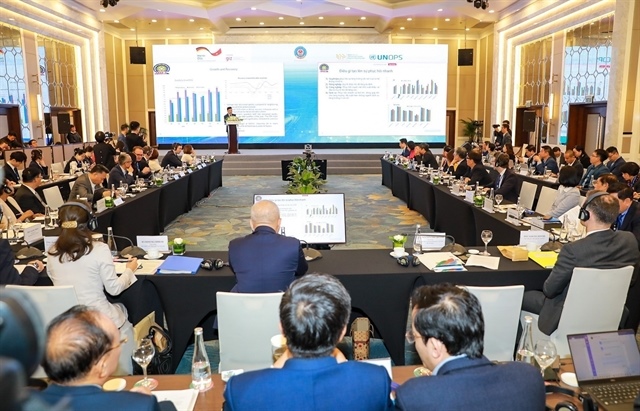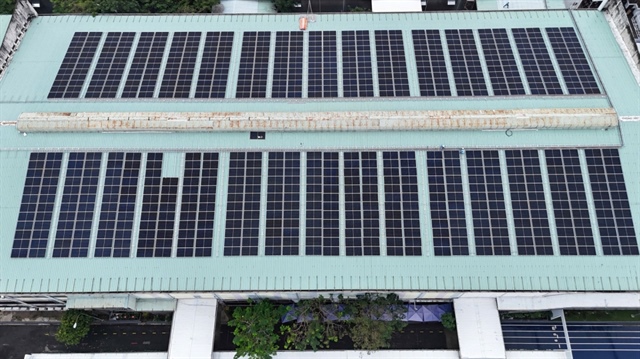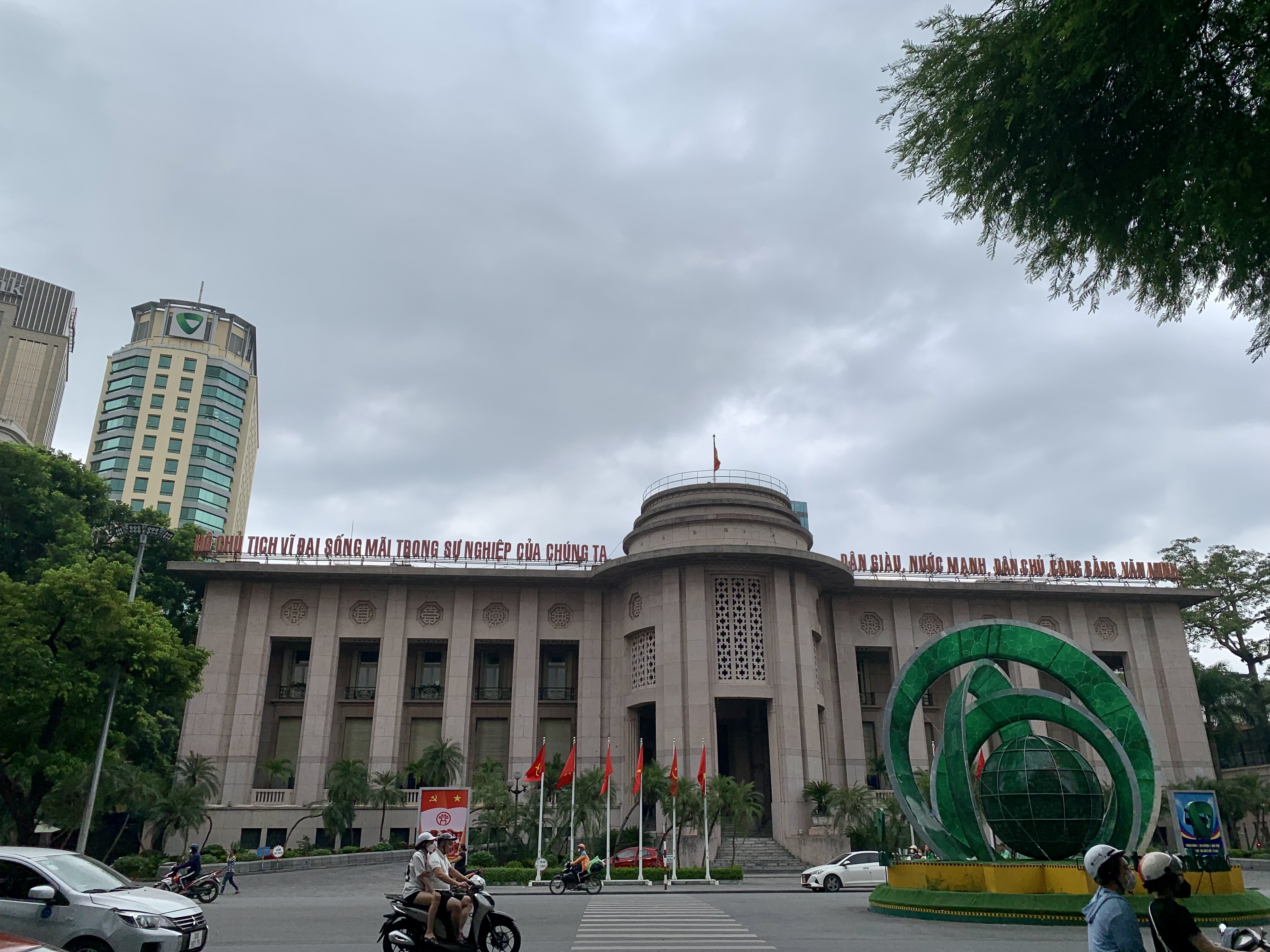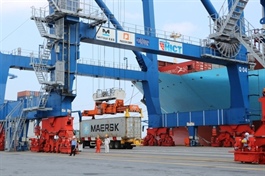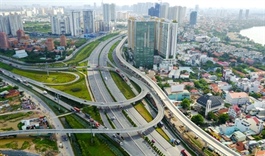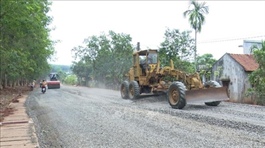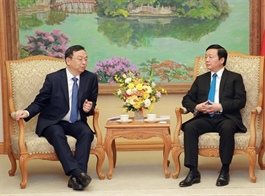Vietnam striving for global value chain lift
Vietnam striving for global value chain lift
Vietnam is transforming into a manufacturing-oriented economy via its increasing participation in the global value chain, especially in manufacturing. Nevertheless, amid the post-pandemic reconfiguration, related policies need to be carefully aligned to the country’s development strategy.
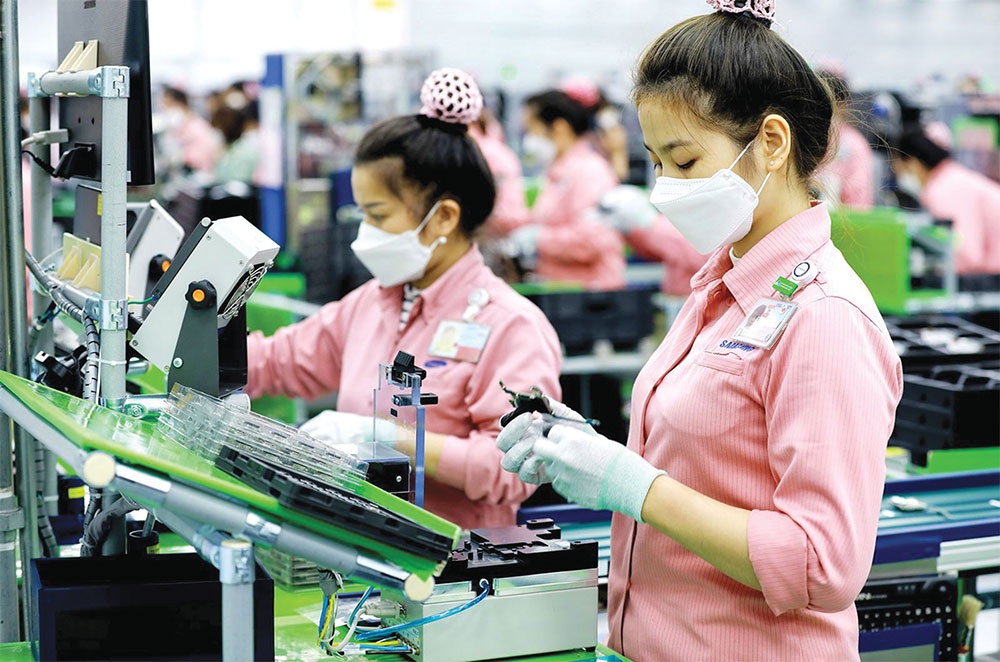
Over the past years, Samsung from South Korea has become an exemplary story of a multinational corporation in Vietnam that has been operating successfully in the country and supporting it to climb the global value chain (GVC).
Late last year, Samsung inaugurated its biggest research and development centre in Southeast Asia. The new research facility was opened in Hanoi at an estimated cost of $220 million. This is just the latest investment from the South Korean giant, which has been manufacturing in Vietnam since 2008 with initial investment of $670 million. Since then, Samsung has invested an estimated $20 billion and the group is set to add an additional $3.3 billion in Vietnam.
Samsung Vietnam exported $65 billion worth of products last year, down 0.8 per cent from 2021. According to Samsung’s Supplier List 2022, which covers 80 per cent of its manufactured goods, the electronics giant had 28 factories producing electronics in Vietnam across 11 provinces. The bulk is centred in the north, with 25 factories.
Major role
According to the Ministry of Planning and Investment (MPI), the contributions of such businesses to Vietnam’s economic growth are hugely significant. The country’s economy grew 8.02 per cent last year, and 3.32 per cent in the first quarter of 2022. The Vietnamese government has consistently underlined the big role of foreign direct investment (FDI) in spurring its exports via GVC participation, as well as boosting economic growth.
MPI statistics indicate that disbursement of FDI in Vietnam in 2022 was estimated at nearly $22.4 billion, up 13.5 per cent on-year, the highest in five years. Accumulatively as of December 2022, total newly registered and newly added capital and capital contributions and stake acquisitions in the country reached $27.72 billion, down 11 per cent on-year.
Foreign investors pumped money into 19 out of 21 national economic sectors, of which the processing and manufacturing industry took the lead with $16.8 billion, or 60.6 per cent of the total registered capital.
During January-April 20, 2023, total newly registered and newly added capital, and capital from stake acquisitions and capital contributions from foreign investors hit $8.88 billion, down 17.9 per cent on-year. Total four-month FDI disbursement touched an estimated $5.85 billion, down 1.2 per cent on-year.
As the biggest foreign direct investor in Vietnam, it is not surprising that Samsung has a sizeable influence on the way Vietnam participates in GVCs. Prior to 2019, of around 100 of Samsung’s suppliers who collectively accounted for 80 per cent of its transaction volume, 28 were listed as operating in Vietnam, although these appear to be foreign-owned. More than half were based or had operations in South Korea, 30 in China, and 16 in Japan.
This sourcing breakdown is largely consistent with Vietnam’s top imports from the ASEAN+3 economies, which are also mostly electronic in nature. In particular, these are mostly intermediate goods consisting of semiconductors and electronics.
As Vietnam continues to be a highly attractive production base to other multinationals, the influx of these new projects will also help shape its future GVC participation. For example, the media reported Apple shifting nearly 30 per cent (up to four million units) of its wireless headphones into Vietnam away from China. As a result, supplier Goertek has also confirmed plans to move its production in the same direction.
Apple and Google supplier Foxconn has reportedly signed an MoU with Vietnam’s developer in Kinh Bac city to expand their facility in northern Vietnam. The Taiwanese manufacturer’s new factory will span 50.5 hectares in the northern province of Bac Giang, expecting to create 30,000 jobs. In 2021 alone, Foxconn invested $1.5 billion, and Taiwan’s Compal Electronics, which also supplies Google, has been expanding production here since 2021.
These investment movements will have a significant impact on how the foreign and/or domestic value added content of its electronics and electrical exports will change in the future.
Similarly, the ongoing movement of international footwear and apparel firms such as Adidas, Nike, and Puma to Vietnam will also influence the backward links of the equally significant garments sector, according to the ASEAN+3 Macroeconomic Research Office (AMRO).
Rise in GVCs
Vietnam’s investment journey since the mid 1980s eventually helped the economy to maintain rapid growth at around 7 per cent since the 2000s, with the exception of periods of global financial crisis. In particular, amid the general slowdown of emerging markets in the post financial crisis period, Vietnam has maintained its strong growth momentum, and more recently, it has seen an explosive growth in exports amid strong FDI.
Vietnam’s exports have diversified and grown exponentially over the past three decades. The economy’s gross exports of goods demonstrated a 67.5-times increase in 27 years, from $5.5 billion in 1995 when it joined ASEAN to the end of 2022.
Over this time, Vietnam’s exports have become more diversified and sophisticated. In the 1990s through the first half of 2000s, primary products, such as food and mineral fuels, accounted for more than half of total exports. From the early 2000s, miscellaneous manufactured goods, such as textiles and clothing, began to increase their contribution to Vietnam’s exports.
And since 2013, the share of machinery, transport, and equipment – in particular mobile devices – in total exports has grown exponentially and exceeded other manufactured and primary products.
In terms of end-use, Vietnam’s exports comprise mainly intermediate goods and final consumption goods, while mixed end-use and capital goods have grown in prominence of late.
The General Department of Vietnam Customs reported that in 2022, Vietnam’s total export-import turnover hit $730.2 billion, up 9.1 per cent on-year. In which the export turnover reached $371.3 billion, up 10.5 per cent, and the import turnover sat at $358.9 billion, up 7.8 per cent.
In the first four months of 2023, Vietnam’s total trade turnover reached $210.79 billion, down 13.6 per cent on-year. In which, total export turnover hit $108.57 billion, down 11.8 per cent on-year, and imports were valued at $102.22 billion, down 15.4 per cent.
Foreign-invested enterprises accounted for 74.4 per cent of total export turnover and 65.12 per cent of total import turnover last year, and the respective rates were 73.7 and 64.17 per cent in the first four months of 2023.
“FDI has played an important role in the rapid growth of exports,” said Professor Nguyen Mai, a senior expert on overseas funding in Vietnam. “Samsung had helped put Vietnam on the global map of high-tech manufacturers by establishing a production base which produces smartphones, electronics, and home appliances for export.”
Currently, about 85 per cent of electronics/ICT hardware and over 40 per cent of electronic-related products produced in Vietnam are destined for export markets, and are mostly manufactured by foreign companies.
Growing interest in Vietnam as a production base has led to strong FDI inflows, particularly in the manufacturing sector. For example, accumulatively as of April 20, FDI-led manufacturing could be found in 16,149 valid projects registered at $265.52 billion – accounting for 43.57 and 59.55 per cent of the total number of foreign-invested projects and registered FDI in Vietnam, respectively. In addition, FDI into higher value-added non-manufacturing sectors has increased recently too, particularly in professional and sci-tech activities, which will help improve Vietnam’s business environment and total factor productivity going forward.
However, according to experts, amid the post-pandemic GVC reconfiguration, FDI policies need to be carefully aligned to Vietnam’s development strategy.
The country appears to have successfully weathered the pandemic impact on trade and investment activities. Realising the vulnerabilities of existing supply chain network, several multinational companies, especially those in electronics and textiles businesses, are now moving or diversifying their production facilities to Vietnam and other ASEAN countries, which could further strengthen Vietnam’s GVC participation.
“Amid this re-configuration of global supply chains, there should be scope for Vietnam to take advantage of these ongoing changes to propel the country up the production value chain with greater domestic companies’ participation,” said AMRO.
“Additionally, recent increases in FDI in the service sector could provide new opportunities for Vietnam to participate in the higher value tiers of GVCs,” it added. “A deliberate strategy to attract FDI that is open to engaging domestic firms in providing intermediate inputs would be needed to complement policies to develop and support the domestic suppliers.”


